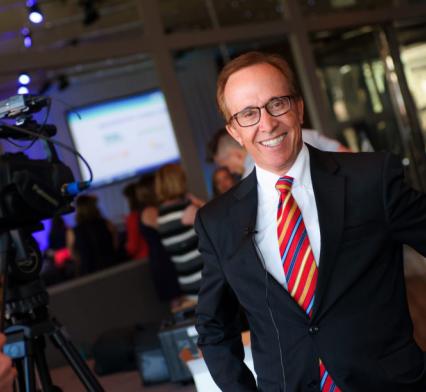Where Infrastructure Goes...Companies Follow
A pertinent quote from Sam Hunter, former head of corporate real estate for GTE Corporation: “We don’t look at where you are as a community; we look at where you’re going.” If there is one thing we have learned in Metro Denver it is this: Building world-class infrastructure during recessions generates jobs during and after recessions. In any given week, you will likely find some story about Metro Denver’s reinvention, its changed economy, and its emergence as a center of innovation and collaboration. “Regionalism,” as practiced in Metro Denver, knows no peer. Pretty heady stuff…and mostly correct.
Noting our economic resiliency during the Great Recession, urban watchers ask the same question of us weekly: “How did you do that?” We are typically compared to other regions that have not fared as well. Other cities bring their business and political leadership to Metro Denver, full of questions and eager to listen as political, business, and civic leaders extoll our great achievements of the past 25 years.
One of the ribbons to fruitful “regionalism” is the construction of massive, world-class infrastructure that benefits the entire region.
The idea of thousands of voters approving tax increases for transit, airports, convention centers, and stadiums in the midst of challenging economic times runs counter to rational taxpayer behavior. Usually we cut back on spending and oppose tax increases. In recent times, almost all economic regions in the United States have followed this pattern, diving under the table, pulling the tablecloth over collective heads and saying to one another in quivering voices, “This too shall pass.”
Starting in the late 1980s, Metro Denver, paralyzed by the fallout of the oil bust, set out to replace its antiquated convention center, Currigan Hall. The City of Denver convinced the legislature to pay for the land and then built the Colorado Convention Center on budget, ahead of schedule. It was a sea change for all of us. With it came the confidence to take on something no one in the United States thought possible: build Denver International Airport.
Billions of dollars poured into the economy. Commodity prices were low and labor costs were flat. It was a great time to build. Our economy rebounded and high paying construction jobs were created.
Consider the additional infrastructure investments.
- Coors Field. In the mid-90s’ economic dip, we built Coors Field, adopting a campaign slogan that said, “If you come, we will build it.” The mid-to-late 90s were boom times and revenues to build Coors poured in at amounts unimagined – so much money that we were able to build Sports Authority Field at Mile High with the same bond issue that we originally thought would only pay for Coors.
- Anschutz Campus. Aurora’s Mayor Paul Tauer gave University Hospital a new home by providing a closed military base’s land, and in the process, created a square mile of life sciences jobs and research. Citizens convinced the Colorado General Assembly to bond the project, now valued at over five billion dollars.
- FasTracks – 2004. After the “dot.bomb” recession, the region once again approved new taxes to create FasTracks, the nation’s biggest mass transit project since the Washington D.C. system. This $7.9 billion project, in addition to a restored Union Station, 57 stops, and a magnificent station at DIA, has pumped even more cash into a now-confident region.
Young professionals heard about the transformation of Metro Denver and flocked here, creating a new organic vibe for downtown Denver and a talented workforce. Corporate headquarters moved here, changing us from a “district town” to a “headquarters town.”
Our efforts are in stark contrast to the nation’s attention to its infrastructure. The United States’ infrastructure is in appalling shape. The collapse of the bridge in Minneapolis two years ago is a precursor of what lies ahead for our 60+ year old interstate highway system.
The results are in. We’ve grown jobs faster than 300+ metro areas. Our housing prices, despite the Great Recession, have held their own, increasing homeowners’ wealth, while Phoenix and Las Vegas are still crawling out of massive losses in housing values.
Be proud; be pleased with what we’ve done. And remember Coors Field is one of the three oldest baseball parks in the National League behind Chicago and Los Angeles. Let’s keep our competitive position. Let’s build.
